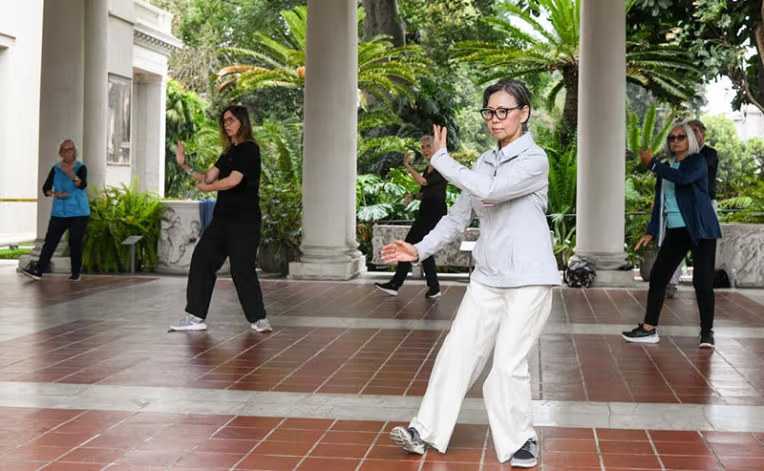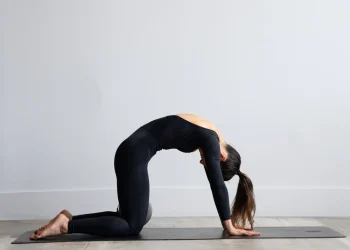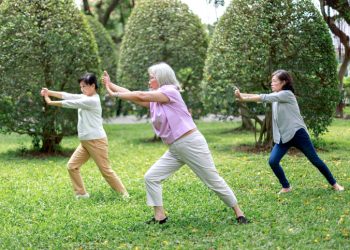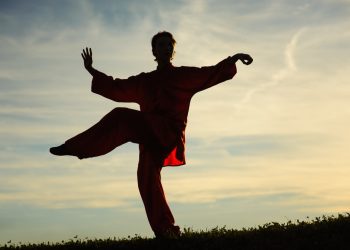Tai Chi walking, often called “walking meditation” or “Tai Chi walking meditation,” is one of the most accessible and fundamental practices within the broader art of Tai Chi. Unlike the flowing hand movements and postures most people associate with Tai Chi, this practice focuses entirely on the act of walking with mindful intention, embodying the core principles of balance, energy flow, and present-moment awareness. Whether you’re new to Tai Chi or looking to deepen your practice, Tai Chi walking offers a gentle yet profound way to cultivate physical health, mental clarity, and inner peace.
Understanding Tai Chi Walking
Tai Chi walking is more than simply walking slowly. It’s a meditative practice that integrates movement with breath, balance, and awareness. Rooted in ancient Chinese philosophy and martial arts, this practice emphasizes the harmonious flow of qi (life energy) throughout the body while developing stability, coordination, and mindfulness. The beauty of Tai Chi walking lies in its simplicity and accessibility—you don’t need special equipment, a large space, or years of training to begin experiencing its benefits.
The practice connects you to fundamental Tai Chi principles: shifting weight mindfully between legs, maintaining proper posture, coordinating breath with movement, and staying present with each step. These same principles form the foundation of all Tai Chi forms, making walking practice an excellent entry point for beginners and a valuable daily practice for experienced practitioners.
The Benefits of Regular Practice
Practicing Tai Chi walking regularly offers numerous physical, mental, and emotional benefits. Physically, it improves balance and coordination, which becomes increasingly important as we age. The slow, deliberate movements strengthen the legs, ankles, and core muscles while promoting better posture and body alignment. The practice also enhances proprioception—your body’s ability to sense its position in space—which can help prevent falls and injuries.
Mentally, Tai Chi walking serves as a moving meditation that calms the mind and reduces stress. The focus required to execute each step with precision naturally quiets mental chatter and brings you into the present moment. Many practitioners report feeling more centered, peaceful, and mentally clear after even just ten minutes of practice.
The practice also cultivates patience and discipline. In our fast-paced world, deliberately slowing down and moving with intention can be surprisingly challenging at first, but it teaches valuable lessons about presence and mindful living that extend far beyond the practice itself.
Essential Principles Before You Begin
Before diving into the step-by-step instructions, it’s important to understand several key principles that underlie Tai Chi walking. First is the concept of “rooting”—feeling connected to the earth through your feet, as if you have roots growing down into the ground. This isn’t just a metaphor; it’s about genuinely sensing stability and support from the ground beneath you.
Second is the principle of weight shifting. In Tai Chi walking, you never have weight distributed evenly on both legs simultaneously during movement. Instead, you’re constantly shifting from having all your weight on one leg to having it all on the other, with intentional transitions between these states.
Third is maintaining what’s called the “suspended headtop.” Imagine a string gently pulling the crown of your head toward the sky, elongating your spine while keeping your chin slightly tucked. This alignment allows energy to flow freely through your body.
Finally, there’s the coordination of breath with movement. While different schools teach different approaches, a common method involves inhaling as you shift weight and lift your foot, and exhaling as you place your foot and settle your weight.
Step-by-Step Instructions for Tai Chi Walking
The Starting Position
Begin by standing in a natural, relaxed stance with your feet parallel and hip-width apart. Let your arms hang naturally at your sides, shoulders relaxed and down, away from your ears. Soften your knees slightly—they should never be locked. Take a few deep breaths, allowing your body to settle and your mind to quiet. Feel your feet making contact with the ground, noticing the weight distributed evenly between both feet.
Step One: Preparing to Move
Shift all your weight onto your left leg. Do this slowly and deliberately, taking several seconds to complete the transfer. As you shift, feel your left leg engaging to support your entire body weight. Your right leg should now feel light, almost weightless, though your right foot remains in contact with the ground. This is crucial—even though your right leg bears no weight, don’t lift the foot yet.
Step Two: The Empty Step
With your weight fully on your left leg, slowly begin to lift your right heel off the ground while keeping your toes in contact with the floor. This position is called the “empty step.” Your right foot is hollow, bearing no weight, and only the ball of your foot and toes maintain gentle contact with the ground. Hold this position for a moment, checking that your balance is stable and your standing leg is strong.
Step Three: Lifting the Foot
Slowly and mindfully lift your right foot completely off the ground. Lift from the knee, keeping your ankle relaxed and your foot in a natural position—neither pointed nor flexed. Raise your foot only a few inches off the ground, just high enough to clear the surface. As you lift, maintain your balance on your left leg. If you wobble, don’t worry; this is normal and will improve with practice.
Step Four: Placing the Foot
Extend your right foot forward, leading with the heel. The step should be relatively short—perhaps six to twelve inches, or whatever feels comfortable and natural for your body. Gently touch your right heel to the ground first, with your toes pointing slightly upward. Your weight is still entirely on your left leg at this moment. This heel-first placement is essential; it allows for a controlled, deliberate transfer of weight.
Step Five: Transferring Weight
This is perhaps the most important phase. Very slowly, begin shifting your weight from your left leg to your right leg. As you do so, your right foot gradually lowers and flattens against the ground, progressing from heel to mid-foot to toe. This weight transfer should take several seconds—imagine moving through honey or being in slow motion. Feel the weight rolling through your right foot as it accepts more and more of your body weight.
Step Six: Completing the Step
Continue shifting until all your weight rests on your right leg. Your left leg should now feel light and empty, though your left foot remains in contact with the ground. You’ve completed one full step. Take a moment to stabilize and feel the solidity of your stance before beginning the next step.
Continuing the Practice
Repeat the entire sequence with the opposite leg—shifting weight, emptying the back foot, lifting, placing the heel, transferring weight. Continue this pattern, moving mindfully through space. A typical practice session might involve walking for ten to twenty steps, then turning around and walking back, or walking in a large circle.
Common Mistakes to Avoid
One of the most frequent mistakes beginners make is rushing through the movements. Tai Chi walking is not about covering distance; it’s about the quality of each step. If you find yourself moving quickly or feeling hurried, slow down even more. The ideal pace is almost uncomfortably slow at first.
Another common error is holding tension in the body, particularly in the shoulders, neck, and face. Regularly scan your body as you practice, releasing any tension you discover. Your jaw should be relaxed, your tongue resting gently against the roof of your mouth, and your gaze soft and forward.
Many beginners also struggle with weight distribution, either keeping weight on both legs during transitions or shifting weight too quickly. Remember that at any given moment during movement, your weight should be entirely on one leg or the other, never 50/50. The transition between these states should be smooth and gradual.
Leaning forward or back is another issue to watch for. Your torso should remain vertical and centered over your weighted leg throughout the practice. If you feel yourself leaning, reset your posture and begin again.
Finally, don’t forget to breathe. Some people become so focused on the mechanics of walking that they hold their breath or breathe shallowly. Your breath should be natural, deep, and coordinated with your movement.
Tips for Beginners
Start with very short practice sessions—even five minutes is valuable when you’re beginning. As the movements become more familiar and comfortable, gradually extend your practice time. Quality matters far more than duration.
Practice in a quiet space where you won’t be disturbed or feel self-conscious. Many people find that practicing outdoors in nature enhances the meditative quality of the practice, though a clear hallway or room works perfectly well.
Consider practicing barefoot, especially when you’re first learning. This allows you to feel the ground more directly and develops a stronger sense of connection and balance.
Don’t worry about arm movements initially. While some Tai Chi walking practices include specific arm positions or movements, it’s perfectly appropriate for beginners to simply let their arms hang naturally or hold them in a comfortable position. Focus on mastering the footwork and weight shifting first.
Be patient with yourself. Balance and coordination improve with regular practice, so don’t be discouraged if you wobble or need to reset frequently at first. Even experienced practitioners sometimes lose their balance—it’s part of the learning process.
Getting Started: Practical Advice
Begin your Tai Chi walking journey by committing to practice for just five to ten minutes daily. Consistency matters more than length, and a short daily practice will yield better results than occasional longer sessions. Morning practice can set a calm, centered tone for your day, while evening practice can help you unwind and release accumulated tension.
Consider finding a qualified Tai Chi instructor, even if only for a few initial sessions. Having someone observe your form and provide personalized feedback can help you develop good habits from the start and avoid reinforcing incorrect patterns. Many community centers, martial arts schools, and wellness centers offer Tai Chi classes.
You might also benefit from watching instructional videos to supplement your practice, though be discerning about sources and look for teachers with legitimate training and credentials in Tai Chi.
Keep a simple practice journal to note your experiences, challenges, and progress. Writing about your practice can deepen your understanding and help you recognize patterns or insights that emerge over time.
Remember that Tai Chi walking is ultimately a practice of presence and self-cultivation. There’s no destination to reach, no competition, and no “perfect” way to do it. Each step is an opportunity to connect with your body, calm your mind, and experience the simple yet profound act of mindful movement. With patience, regular practice, and an open heart, you’ll discover that this ancient practice offers gifts that extend far beyond the physical movements themselves.
- learn what is tai chi walking
- complete beginner’s guide to starting tai chi walking
- step-by-step tai chi walking instructions
- proper posture for tai chi walking
- essential techniques to master
- detailed tutorial for tai chi walking
- breathing techniques for tai chi walking
- finding your optimal walking speed
- mastering proper tai chi walking form
- creating your tai chi walking routine






